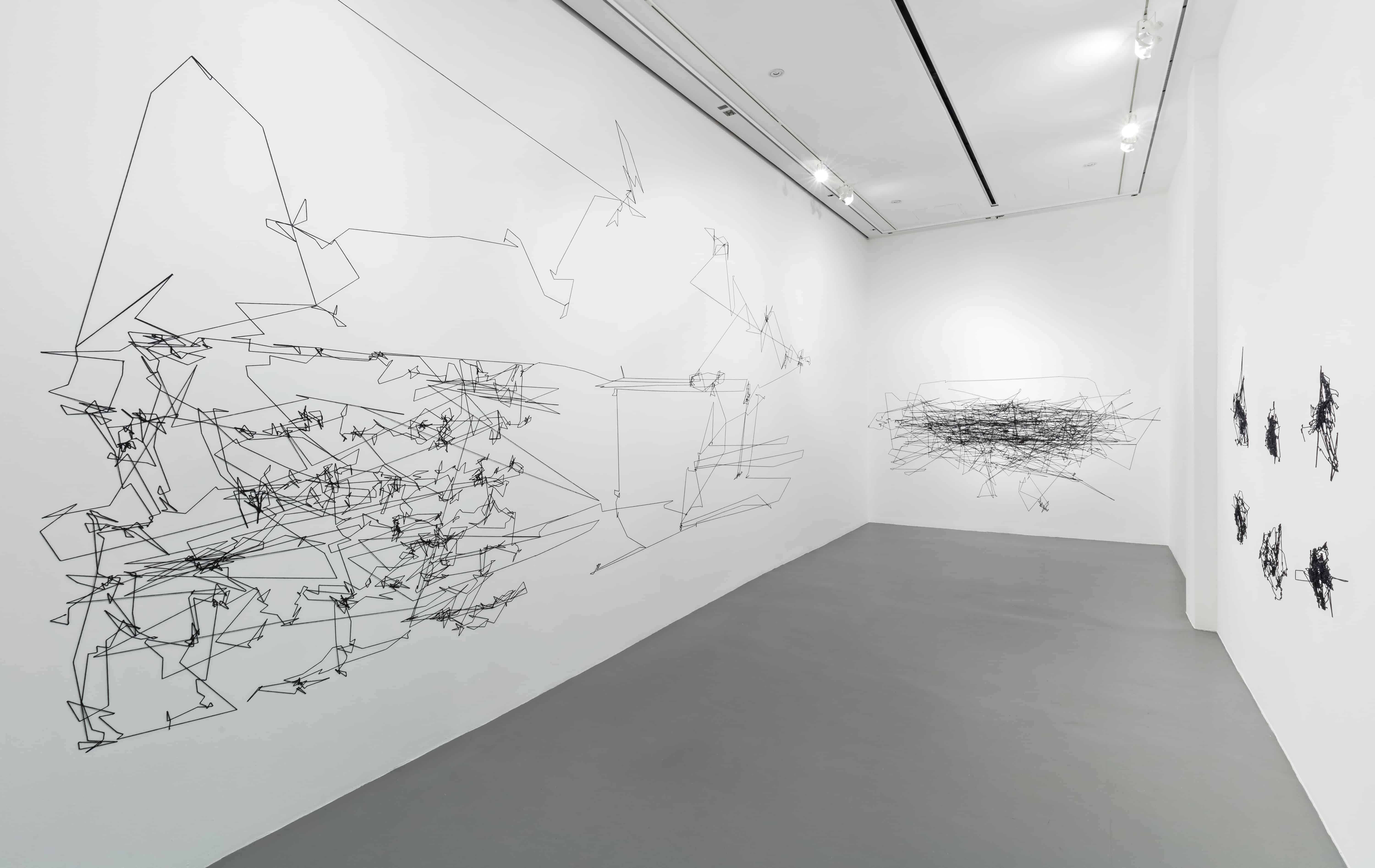Our lives rely on movement. Whether it’s a run to class or quickly skimming our notes before a quiz, some part of our body is always in motion. But what happens when you can track those movements, and what does it say about the individual?
UTM’s Blackwood Gallery recently concluded artist Julien Prévieux’s exhibit, The Elements of Influence (and a Ghost). It contained physical installations and used mechanisms of video, dance, and drawings to explore the recording of movements and gestures. By tracking movement and breaking it down into its purest form, the observer was able to visualize data through recordings that were originally used for criminology work, such as a police map of a crime scene.
Some of the highlights of the exhibit included Prévieux’s project “Drawing workshop – B.A.C. of 14th district of Paris,” a series of drawings of crime maps.
This project highlights how movement can bring change as we move through time. In 2011 and 2015, Prévieux held workshops with Paris police officers on how to draw crime maps by hand, rather than with the use of a computer. In the workshops, the officers lost a prime tool to locate crime but gained an opportunity to reflect on their jobs and how policing has evolved.
Another installation, called Forget the Money, was a collection of books from Bernie Madoff, the American fraudster whose swindling of $65 billion USD from his customers came to light during the 2008 financial crisis.
Prévieux was able to purchase Madoff’s belongings when the FBI sold them at an auction. The books paint a portrait of Madoff’s life and may give the reader insight to Madoff’s motives, how he built his system, and how he got away with it for so long.
Prévieux also held several workshops on gaze-tracking for students, faculty, and other staff members at UTM. First, the participant would look at Prévieux’s work, while an infrared camera would track their pupil. Then, eye-tracking software produced images of the participant’s eye movement, which allowed the observer to see where the participant was looking. The images of the eye’s movement were then physically reproduced with wool on the wall in the gallery. These diagrams are haunting to the observer, imbued with a ghostly quality.
Blackwood Gallery also organized a public talk with three of the participants for this project. The participants were Sarah Sharma, Associate Professor at the Institute of Communication, Culture, Information, and Technology; Brian Price, Associate Professor of Cinema Studies; and Bobbi-Jo Duff, a member of the Campus Police.
The speakers commented on their excitement and curiosity about partaking in the workshop. All the speakers noted the strange feelings that stemmed from being observed themselves, rather than being the observers of the art. Sharma noted that she was suspect of the technology, as if Prévieux would be able to learn something about her from the tracking of her gaze.
The participants reflected on their own vulnerability and their internal thought processes as they studied each artwork. By aiming to explore whether or not an observer’s background affects the way they assess a piece, Prévieux was able to integrate the observer into the art itself.
Prévieux noted, “These hypothetical viewers and their gazes, mapped onto the gallery walls, resonate with [Marcel] Duchamp’s famous observation that the ‘viewer makes the painting.’”
Correction: an earlier version of this article stated that Mr. Prévieux held one workshop on gaze-tracking for UTM students, faculty, and campus police. In fact, Mr. Prévieux held several workshops for UTM students, faculty, and various staff members. The Varsity regrets the error.


